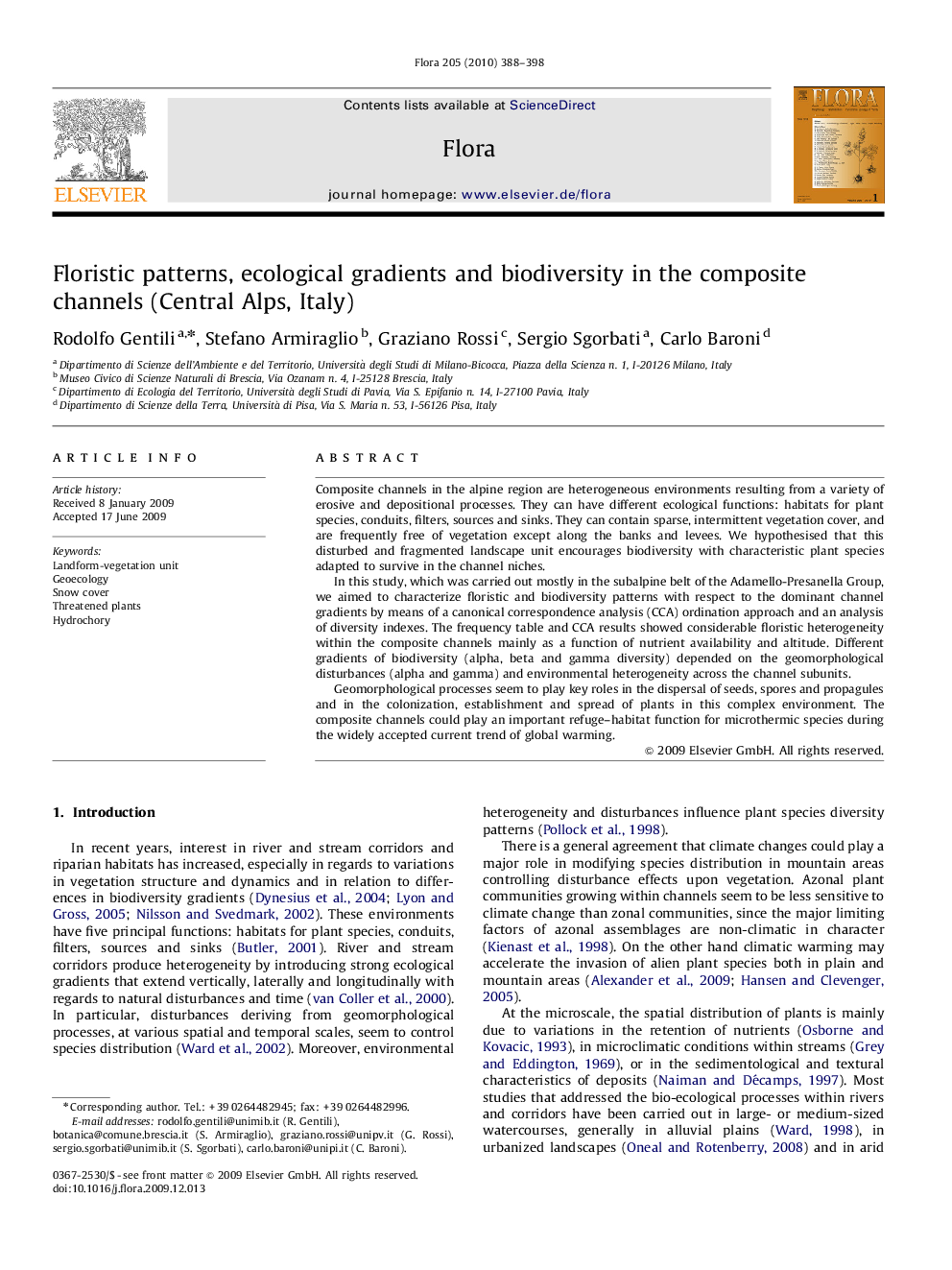| Article ID | Journal | Published Year | Pages | File Type |
|---|---|---|---|---|
| 2180012 | Flora - Morphology, Distribution, Functional Ecology of Plants | 2010 | 11 Pages |
Composite channels in the alpine region are heterogeneous environments resulting from a variety of erosive and depositional processes. They can have different ecological functions: habitats for plant species, conduits, filters, sources and sinks. They can contain sparse, intermittent vegetation cover, and are frequently free of vegetation except along the banks and levees. We hypothesised that this disturbed and fragmented landscape unit encourages biodiversity with characteristic plant species adapted to survive in the channel niches.In this study, which was carried out mostly in the subalpine belt of the Adamello-Presanella Group, we aimed to characterize floristic and biodiversity patterns with respect to the dominant channel gradients by means of a canonical correspondence analysis (CCA) ordination approach and an analysis of diversity indexes. The frequency table and CCA results showed considerable floristic heterogeneity within the composite channels mainly as a function of nutrient availability and altitude. Different gradients of biodiversity (alpha, beta and gamma diversity) depended on the geomorphological disturbances (alpha and gamma) and environmental heterogeneity across the channel subunits.Geomorphological processes seem to play key roles in the dispersal of seeds, spores and propagules and in the colonization, establishment and spread of plants in this complex environment. The composite channels could play an important refuge–habitat function for microthermic species during the widely accepted current trend of global warming.
